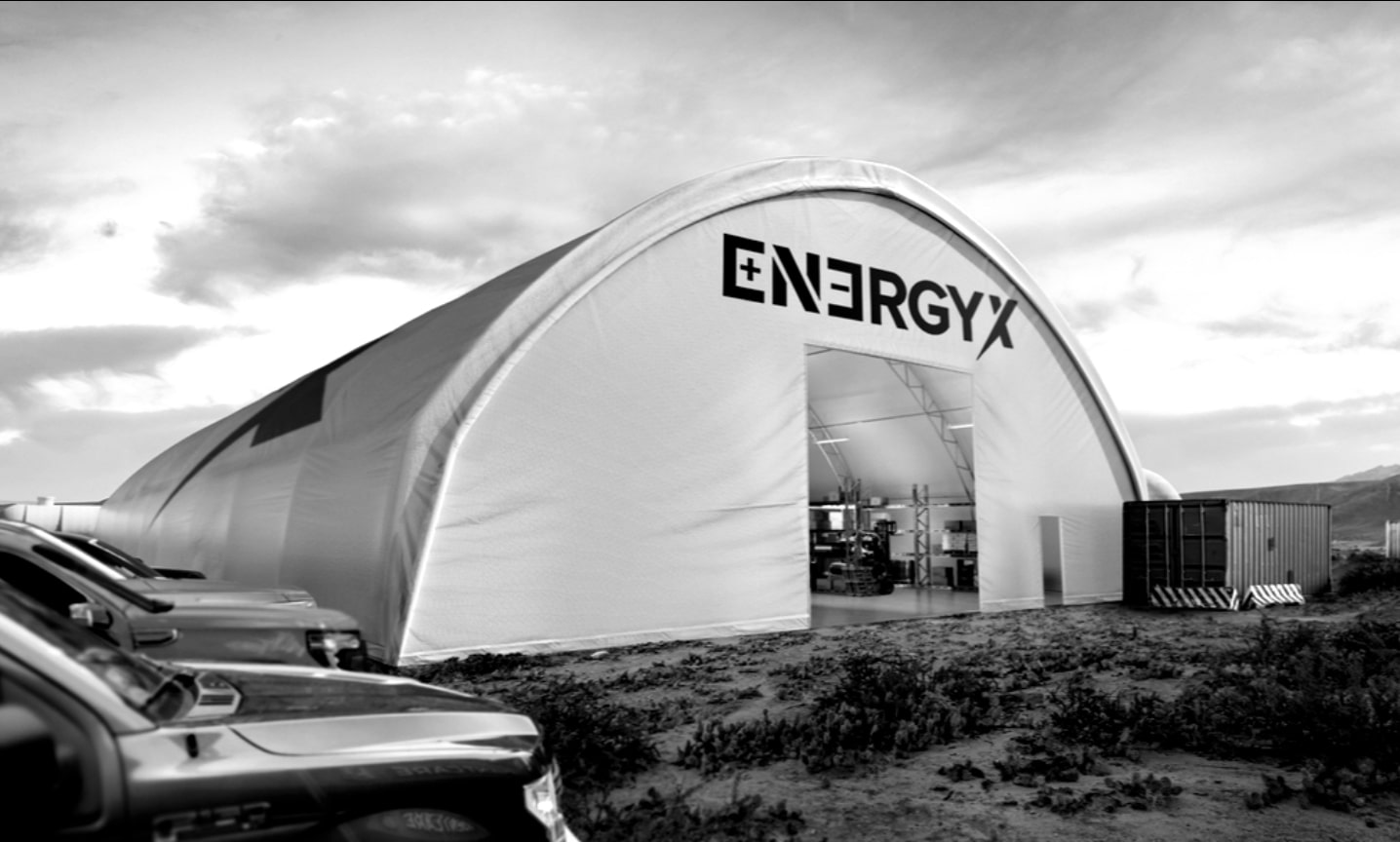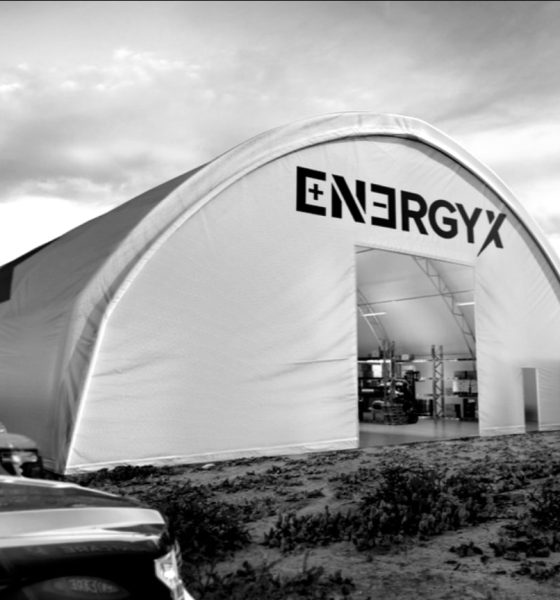

News
GM leaps ahead in lithium mining race, secures next-gen extraction deal
General Motors (GM) has secured a next-generation lithium extraction deal with Puerto Rico-based startup, EnergyX.
With the demand for lithium expected to surpass supply by 2030, automakers have never been more pressed to secure the resource, especially as it becomes increasingly essential for the future of their business, specifically regarding the production of electric vehicles. This has pushed many, including GM, further down its supply chain, buying up companies and securing supplies for the future. Now, GM has gone even further, investing in lithium extraction startup EnergyX, leading a $50 million investment round.
GM has already invested in countless extraction companies and their subsequent mining projects, primarily focusing on lithium, but today’s investment is distinct from all the rest. EnergyX, which GM has invested an undisclosed amount of capital into, is looking to pioneer a new lithium extraction method entirely, which could place GM at the forefront of the most affordable lithium on the planet.
Specifically, EnergyX specializes in “Direct Lithium Extraction” (DLE) technologies, which promise to produce battery-grade lithium from previously overlooked brine sources.
Currently, most lithium extraction is based on the simple and relatively effective “pond evaporation” extraction method, which only requires an extractor to pump out brine, let the water evaporate, and then process the remainder to create pure lithium. However, this process is time-consuming and involves significant chemical processing to get to pure lithium after evaporation. Worse than that, the alternative is even more expensive, more environmentally damaging, and exceedingly rare; hard rock lithium mining.
EnergyX uses a proprietary system to create pure lithium from brines that would typically not work as part of the “evap.” method, and according to the company, it achieves incredible material ROI. EnergyX proudly advertises that “the company’s LiTAS™ technology increases lithium recovery rates to over 90% from the current industry standard of 30-40% using ponds and hit 94% during their field trials.”
However, this system isn’t without its hurdles, and for many automakers, it may appear as a risky investment. Thus far, no DLE refining companies have achieved commercialization, with the most prominent long-lasting project being the BMW-backed Lilac Solutions Inc.
Along with this risk, GM does have some incredible upsides. Not only would it be investing at the ground floor of a potentially booming business and achieve outstanding extraction efficiency, but it would also receive “the right of first refusal” from its newest investment, essentially giving the automaker the right to buy ahead before anyone else.
In a comment to Teslarati, EnergyX explained that it does not currently own any lithium brine reserves but plans to be a refiner for other extractors in the Americas. The business plans to construct five demonstration facilities that will show off its capabilities to lithium extractors, notably within the “lithium triangle” of South America. These facilities will be built in Argentina, Chile, California, Arkansas, and Utah, respectively.
EnergyX also noted to Teslarati that it will begin supplying GM with battery-grade lithium in the coming years, though a specific timeline has not been made public.
Outside of this next-generation lithium extraction process that America’s largest automaker has invested in, it has also become a leader in investing in traditional lithium projects throughout the Americas. Perhaps most notably, thanks to a massive $650 million investment, GM is now the largest shareholder in the Lithium Americas corporation, which is developing North America’s largest lithium deposit; Thacker Pass, Nevada.
As for EnergyX, besides this series B investment round led by GM, it plans to offer an IPO in late 2024 and has already attracted the interest of numerous investment firms looking to get in as soon as the offering is available.
What do you think of the article? Do you have any comments, questions, or concerns? Shoot me an email at william@teslarati.com. You can also reach me on Twitter @WilliamWritin. If you have news tips, email us at tips@teslarati.com!

Cybertruck
Tesla Cybertruck undergoes interior mod that many owners wanted

Tesla Cybertruck is significantly different from traditional pickups on the market in a lot of ways. However, one feature that was recently modified with its interior was a highly requested characteristic that is present in other trucks, but was void from Cybertruck.
Tesla went with a five-seat configuration with Cybertruck: two in the front and three in the back. The spacious interior is matched with plenty of storage, especially up front, as a pass-through, center console, and other storage options, but some Tesla fans wanted something different: bench seating.
Bench seating is popular in many full-size pickups and allows three passengers to sit up front. The middle seat is usually accompanied by a fold-down storage unit with cupholders.
Tesla decided to opt for no bench seating up front, despite the fact that it equipped bench seating in the unveiling in 2019. Interior photos from the unveiling event from nearly six-and-a-half years ago show Tesla had originally planned to have a six-seat configuration.
This was adjusted after the company refined the design:

(Tesla Cybertruck interior configuration in 2019)
Despite Tesla abandoning this design, it does not mean owners were willing to accept it. One owner decided to modify their Tesla Cybertruck interior to equip that third seat between the driver’s and passenger’s thrones.
The fit is snug, and while it looks great, it is important to remember that this does not abide byregulations, as it would require an airbag to be technically legal. Please do not do this at home with your own Cybertruck:
- Credit: @blueskykites
- Credit: @blueskykites
- Credit: @blueskykites
The Cybertruck is a popular vehicle in terms of publicity, but its sales have been underwhelming since first delivered to customers back in 2023. It’s hard to believe it’s been out for two-and-a-half years, but despite this, Tesla has not been able to come through on its extensive order sheet.
This is mostly due to price, as Cybertruck was simply not as affordable as Tesla originally planned. Its three configurations were initially priced at $39,990, $49,990, and $69,990. At release, Cybertruck was priced above $100,000.
This priced out many of those who had placed orders, which is the main reason Cybertruck has not lived up to its expectations in terms of sales. The adjustments to the specific features, like the removal of the bench seat, likely did not impact sales as much as pricing did.
This modification shows some creativity by Tesla owners, but also shows that the Cybertruck could always be the subject of a potential refresh to include some of these features. Tesla routinely adjusts its vehicle designs every few years, so maybe the Cybertruck could get something like this if it chooses to refresh its all-electric pickup.
Elon Musk
Tesla CEO Elon Musk drops massive bomb about Cybercab
“And there is so much to this car that is not obvious on the surface,” Musk said.

Tesla CEO Elon Musk dropped a massive bomb about the Cybercab, which is the company’s fully autonomous ride-hailing vehicle that will enter production later this year.
The Cybercab was unveiled back in October 2024 at the company’s “We, Robot” event in Los Angeles, and is among the major catalysts for the company’s growth in the coming years. It is expected to push Tesla into a major growth phase, especially as the automaker is transitioning into more of an AI and Robotics company than anything else.
The Cybercab will enable completely autonomous ride-hailing for Tesla, and although its other vehicles will also be capable of this technology, the Cybercab is slightly different. It will have no steering wheel or pedals, and will allow two occupants to travel from Point A to Point B with zero responsibilities within the car.
Tesla shares epic 2025 recap video, confirms start of Cybercab production
Details on the Cybercab are pretty face value at this point: we know Tesla is enabling 1-2 passengers to ride in it at a time, and this strategy was based on statistics that show most ride-hailing trips have no more than two occupants. It will also have in-vehicle entertainment options accessible from the center touchscreen.
It will also have wireless charging capabilities, which were displayed at “We, Robot,” and there could be more features that will be highly beneficial to riders, offering a full-fledged autonomous experience.
Musk dropped a big hint that there is much more to the Cybercab than what we know, as a post on X said that “there is so much to this car that is not obvious on the surface.”
And there is so much to this car that is not obvious on the surface
— Elon Musk (@elonmusk) January 2, 2026
As the Cybercab is expected to enter production later this year, Tesla is surely going to include a handful of things they have not yet revealed to the public.
Musk seems to be indicating that some of the features will make it even more groundbreaking, and the idea is to enable a truly autonomous experience from start to finish for riders. Everything from climate control to emergency systems, and more, should be included with the car.
It seems more likely than not that Tesla will make the Cybercab its smartest vehicle so far, as if its current lineup is not already extremely intelligent, user-friendly, and intuitive.
Investor's Corner
Tesla Q4 delivery numbers are better than they initially look: analyst
The Deepwater Asset Management Managing Partner shared his thoughts in a post on his website.

Longtime Tesla analyst and Deepwater Asset Management Managing Partner Gene Munster has shared his insights on Tesla’s Q4 2025 deliveries. As per the analyst, Tesla’s numbers are actually better than they first appear.
Munster shared his thoughts in a post on his website.
Normalized December Deliveries
Munster noted that Tesla delivered 418k vehicles in the fourth quarter of 2025, slightly below Street expectations of 420k but above the whisper number of 415k. Tesla’s reported 16% year-over-year decline, compared to +7% in September, is largely distorted by the timing of the tax credit expiration, which pulled forward demand.
“Taking a step back, we believe September deliveries pulled forward approximately 55k units that would have otherwise occurred in December or March. For simplicity, we assume the entire pull-forward impacted the December quarter. Under this assumption, September growth would have been down ~5% absent the 55k pull-forward, a Deepwater estimate tied to the credit’s expiration.
“For December deliveries to have declined ~5% year over year would imply total deliveries of roughly 470k. Subtracting the 55k units pulled into September results in an implied December delivery figure of approximately 415k. The reported 418k suggests that, when normalizing for the tax credit timing, quarter-over-quarter growth has been consistently down ~5%. Importantly, this ~5% decline represents an improvement from the ~13% declines seen in both the March and June 2025 quarters.“
Tesla’s United States market share
Munster also estimated that Q4 as a whole might very well show a notable improvement in Tesla’s market share in the United States.
“Over the past couple of years, based on data from Cox Automotive, Tesla has been losing U.S. EV market share, declining to just under 50%. Based on data for October and November, Cox estimates that total U.S. EV sales were down approximately 35%, compared to Tesla’s just reported down 16% for the full quarter. For the first two months of the quarter, Cox reported Tesla market share of roughly a 65% share, up from under 50% in the September quarter.
“While this data excludes December, the quarter as a whole is likely to show a material improvement in Tesla’s U.S. EV market share.“











